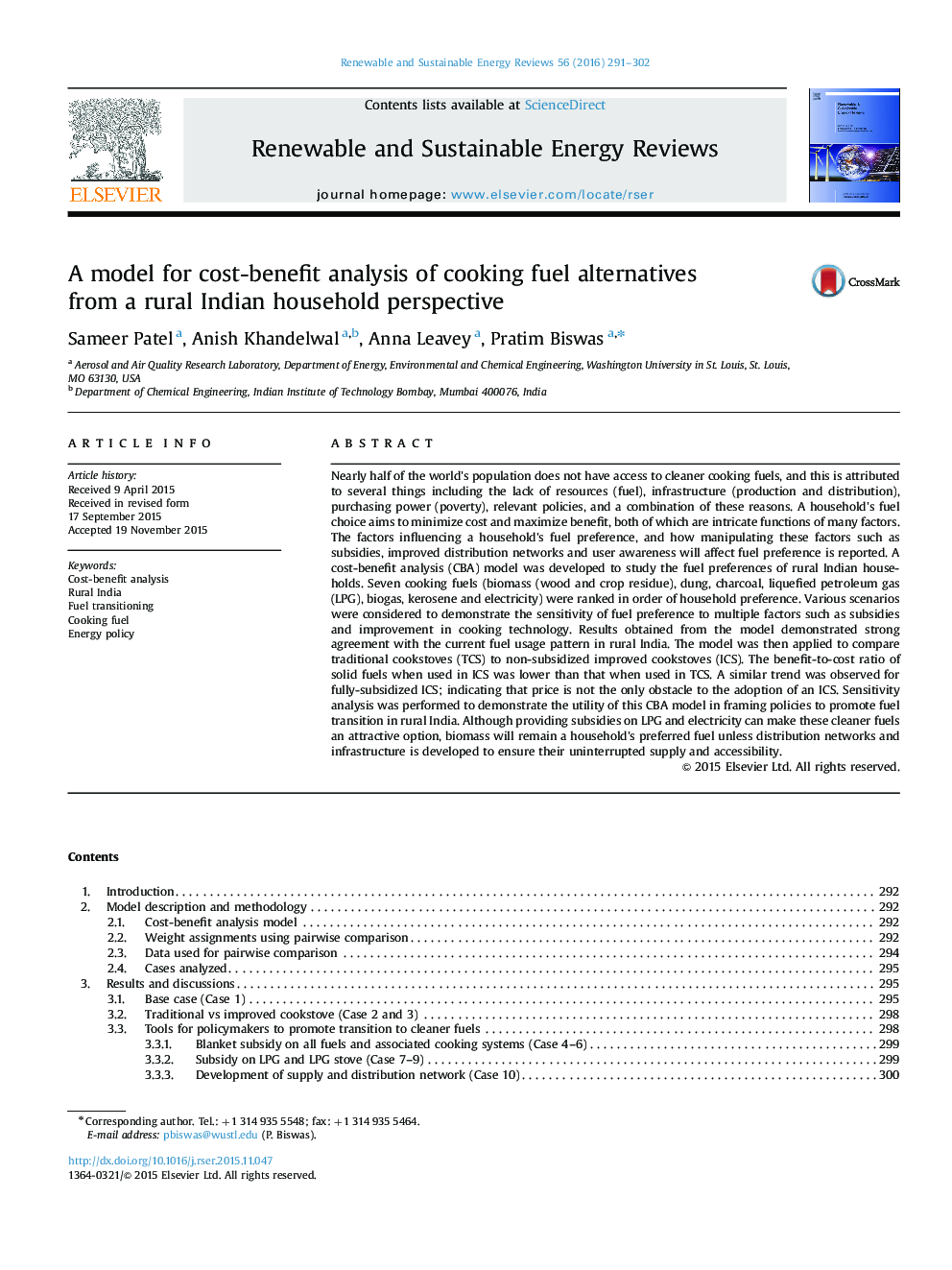| کد مقاله | کد نشریه | سال انتشار | مقاله انگلیسی | نسخه تمام متن |
|---|---|---|---|---|
| 8114708 | 1522329 | 2016 | 12 صفحه PDF | دانلود رایگان |
عنوان انگلیسی مقاله ISI
A model for cost-benefit analysis of cooking fuel alternatives from a rural Indian household perspective
ترجمه فارسی عنوان
یک مدل برای تجزیه و تحلیل هزینه-سود از جایگزین های سوخت پخت و پز از چشم انداز خانه های روستایی هند
دانلود مقاله + سفارش ترجمه
دانلود مقاله ISI انگلیسی
رایگان برای ایرانیان
کلمات کلیدی
تجزیه و تحلیل هزینه و سود، روستایی هند، انتقال سوخت، سوخت پخت و پز، سیاست انرژی،
موضوعات مرتبط
مهندسی و علوم پایه
مهندسی انرژی
انرژی های تجدید پذیر، توسعه پایدار و محیط زیست
چکیده انگلیسی
Nearly half of the world׳s population does not have access to cleaner cooking fuels, and this is attributed to several things including the lack of resources (fuel), infrastructure (production and distribution), purchasing power (poverty), relevant policies, and a combination of these reasons. A household׳s fuel choice aims to minimize cost and maximize benefit, both of which are intricate functions of many factors. The factors influencing a household׳s fuel preference, and how manipulating these factors such as subsidies, improved distribution networks and user awareness will affect fuel preference is reported. A cost-benefit analysis (CBA) model was developed to study the fuel preferences of rural Indian households. Seven cooking fuels (biomass (wood and crop residue), dung, charcoal, liquefied petroleum gas (LPG), biogas, kerosene and electricity) were ranked in order of household preference. Various scenarios were considered to demonstrate the sensitivity of fuel preference to multiple factors such as subsidies and improvement in cooking technology. Results obtained from the model demonstrated strong agreement with the current fuel usage pattern in rural India. The model was then applied to compare traditional cookstoves (TCS) to non-subsidized improved cookstoves (ICS). The benefit-to-cost ratio of solid fuels when used in ICS was lower than that when used in TCS. A similar trend was observed for fully-subsidized ICS; indicating that price is not the only obstacle to the adoption of an ICS. Sensitivity analysis was performed to demonstrate the utility of this CBA model in framing policies to promote fuel transition in rural India. Although providing subsidies on LPG and electricity can make these cleaner fuels an attractive option, biomass will remain a household׳s preferred fuel unless distribution networks and infrastructure is developed to ensure their uninterrupted supply and accessibility.
ناشر
Database: Elsevier - ScienceDirect (ساینس دایرکت)
Journal: Renewable and Sustainable Energy Reviews - Volume 56, April 2016, Pages 291-302
Journal: Renewable and Sustainable Energy Reviews - Volume 56, April 2016, Pages 291-302
نویسندگان
Sameer Patel, Anish Khandelwal, Anna Leavey, Pratim Biswas,
